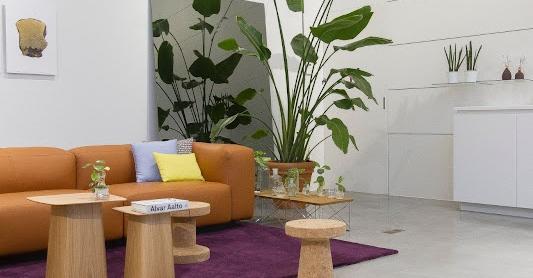In our increasingly urbanised and digitally connected world, many people spend the majority of their time indoors, often separated from the natural environment. However, research consistently shows that our connection to nature is essential for our physical and mental well-being. Biophilic design, an innovative approach to architecture and interior design, seeks to bridge this gap by bringing elements of nature into indoor spaces. Here, we’ll explore the concept of biophilic design, its benefits, key principles, and how it can be integrated into workplaces to create healthier, more productive, and more enjoyable environments for employees.
The Biophilic Design Revolution
Biophilic design is a concept that has gained significant attention in recent years, driven by a growing awareness of the importance of our connection to the natural world. The term “biophilia” was coined by biologist E.O. Wilson and refers to the innate human affinity for nature. Biophilic design, then, is the practice of incorporating nature and natural elements into the built environment.
This design approach seeks to address the “nature deficit” that many people experience in urban settings, where access to green spaces and natural elements is limited. By reintroducing elements of nature into our indoor spaces, biophilic design aims to enhance our overall well-being, boost productivity, and foster a sense of calm and rejuvenation.
The Benefits of Biophilic Design in the Workplace
Why is biophilic design gaining significant attention in the workplace? The answer lies in the numerous benefits it offers to both employees and organisations:
1. Improved Well-being and Health
- Stress Reduction: Exposure to nature and natural elements has been shown to reduce stress levels and lower blood pressure.
- Enhanced Mental Health: Biophilic design can promote a positive mood, reduce symptoms of anxiety and depression, and increase overall psychological well-being.
- Increased Productivity: A healthier and happier workforce tends to be more productive, creative, and engaged in their work.
2. Increased Creativity and Innovation
Natural environments have long been a source of inspiration for creative endeavours. Biophilic design can stimulate innovative thinking and problem-solving.
3. Enhanced Focus and Concentration
- Attention Restoration: Exposure to nature and natural elements can improve cognitive function and increase the ability to concentrate on tasks.
- Reduced Mental Fatigue: Nature-inspired elements in the workplace can reduce mental fatigue and increase attention span.
4. Positive Impact on Physical Health
- Improved Air Quality: Plants used in biophilic design can help filter indoor air pollutants, leading to better indoor air quality.
- Reduction in Sick Days: A healthier indoor environment can result in fewer sick days taken by employees, reducing absenteeism.
5. Attracting and Retaining Talent
- Employee Satisfaction: Biophilic design can contribute to higher levels of job satisfaction and make an organisation more attractive to potential employees.
- Talent Retention: Employees who enjoy their workspace are more likely to stay with the company, reducing turnover and associated costs.
Key Principles of Biophilic Design
To harness the benefits of biophilic design effectively, it’s essential to understand the key principles and elements that define this approach. Here are some fundamental concepts:
1. Direct and Indirect Nature
- Direct Nature: This involves incorporating real, living plants and natural materials, such as wood and stone, into the workspace. Living green walls, potted plants, and natural textures on surfaces are examples.
- Indirect Nature: Indirect elements evoke the feeling of nature without necessarily using natural materials. These may include nature-inspired artwork, lighting that mimics natural sunlight, or colours that evoke natural landscapes.
2. Visual Connections to Nature
- Views of Nature: Providing access to outdoor views or incorporating large windows with natural vistas can help employees feel more connected to the natural world.
- Nature-Inspired Art: Nature-themed artwork and installations can bring the outdoors inside and provide visual comfort.
3. Natural Light and Air Quality
- Daylighting: Maximising natural light through well-designed windows and skylights not only reduces the need for artificial lighting but also improves mood and energy levels.
- Air Circulation: Proper ventilation and air quality are critical. Biophilic design often includes features like operable windows or advanced HVAC systems that deliver fresh air.
4. Natural Shapes and Patterns
- Organic Shapes: Incorporating organic, irregular shapes into design elements, such as furniture or architectural details, mimics patterns found in nature.
- Biomorphic Patterns: Using patterns that resemble natural forms, such as the branching of trees or the swirl of water, can create a calming and visually engaging environment.
5. Water Features
The sound and sight of water, whether through fountains, ponds, or indoor water walls, can create a tranquil and soothing atmosphere.
6. Multi-Sensory Experience
Biophilic design engages multiple senses, including touch, smell, sight, and sound, to create a more immersive and enriching experience.
7. Variety and Diversity
Providing a variety of spaces, from quiet, reflective areas to more dynamic and social spaces, accommodates different workstyles and preferences.
Implementing Biophilic Design in the Workplace
Now that we’ve explored the principles and benefits of biophilic design, let’s delve into practical ways to implement this approach in the Office Interior Designer:
1. Integrate Plants and Greenery
- Living Walls: Vertical gardens or green walls are striking features that bring nature into the workspace, improve air quality, and reduce stress.
- Indoor Plants: Place potted plants and planters throughout the office, especially in common areas and near workstations.
- Biophilic Planters: Use furniture with built-in planters to seamlessly blend nature with office furnishings.
2. Maximise Natural Light
- Optimise Window Placement: Ensure workspaces have access to natural light by placing workstations near windows or using glass partitions to allow light to penetrate deeper into the workspace.
- Use Light Wells: Install light wells or skylights to bring daylight to interior areas.
- Dynamic Lighting: Consider dynamic lighting systems that mimic natural light patterns, adjusting intensity and colour temperature throughout the day.
3. Incorporate Natural Materials
- Wood and Stone: Use natural materials like wood and stone for flooring, furniture, and architectural elements.
- Natural Textures: Incorporate textures that evoke natural elements, such as leaf patterns in carpeting or rough-hewn wooden surfaces.
4. Natural Views and Outdoor Spaces
- Outdoor Workspaces: If possible, create outdoor workspaces, patios, or rooftop gardens where employees can work surrounded by nature.
- Window Seating: Arrange seating near windows to provide employees with natural views and the opportunity to connect with the outdoors.
5. Water Features and Sounds
- Indoor Water Features: Consider incorporating indoor water features like fountains or small ponds to introduce the calming sound of water.
- Nature Soundscapes: Use audio systems to play nature soundscapes, such as flowing streams or birdsong, to create a more immersive experience.
6. Biophilic Furniture and Layouts
- Naturalistic Furniture: Choose furniture with organic shapes and natural materials to create a more inviting and comfortable environment.
- Flexible Layouts: Create flexible workspace layouts that allow employees to choose between collaborative and individual workspaces, catering to various work styles.
7. Multi-Sensory Experience
- Aromatherapy: Consider using natural scents and aromatherapy diffusers to engage the sense of smell.
- Tactile Elements: Introduce tactile elements like textured fabrics, wooden surfaces, or natural materials for furniture and decor.
8. Biophilic Office Accessories
These include accessories like plant-themed desk organisers, natural wood desk accessories, and nature-inspired art prints.
9. Employee Engagement
- Workshops and Education: Host workshops or educational sessions to inform employees about the benefits of biophilic design and how to incorporate nature into their workspace.
- Employee Involvement: Encourage employees to take ownership of biophilic elements in their workspace by allowing them to care for plants or contribute to the design.
Budget Considerations for Biophilic Design
Implementing biophilic design elements can vary in cost, but it’s possible to find budget-friendly options:
- Start Small: Begin with small, affordable changes like adding potted plants, nature-themed artwork, or natural textures to existing spaces.
- Local Greenery: Source plants and materials locally to reduce costs associated with transportation and to support the local community.
- Repurposing: Repurpose or upcycle existing furniture or decor elements to create nature-inspired pieces.
- DIY Projects: Encourage employees to participate in DIY projects, like creating planters or natural-themed decorations, which can be cost-effective and engaging.
Evaluation and Analysis
To gauge the effectiveness of biophilic design in your workplace, consider the following evaluation methods:
- Employee Surveys: Gather feedback from employees about their experience and satisfaction with the biophilic elements.
- Health and Well-being Metrics: Track metrics such as stress levels, absenteeism, and overall health to assess improvements.
- Productivity and Creativity: Monitor changes in productivity and creativity to determine if biophilic design has positively influenced these aspects.
- Retention Rates: Keep an eye on employee retention rates, as a more enjoyable workspace can lead to higher employee loyalty.
In Conclusion
Biophilic design is not just a trend but a transformative approach to creating healthier, more inspiring workspaces. By incorporating elements of nature into the workplace, organisations can enhance employee well-being, boost productivity, and create a more enjoyable and sustainable environment. In a world where urbanisation and digitalisation are on the rise, biophilic design offers a way to reconnect with our natural surroundings, leading to happier, more engaged, and more innovative employees. Whether you’re starting with small changes or planning a major redesign, the journey toward a biophilic workplace is one that benefits both individuals and the organisations they serve.



